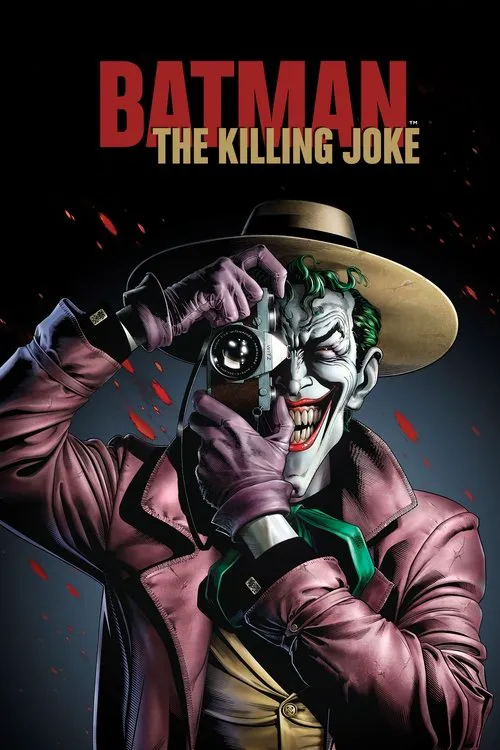Batman: The Killing Joke

Plot
In the 1980s Batman comic book issue "The Killing Joke," Alan Moore masterfully crafted a complex and intriguing storyline that delved into the psyche of the Joker, exploring the events that led him to his eventual fall into madness. The animated adaptation, "Batman: The Killing Joke," stays true to the source material, presenting a gripping tale of the Joker's assault on James Gordon and his family. The story begins with Batman, the Dark Knight of Gotham City, in hot pursuit of the Joker, the Clown Prince of Crime, who has escaped from Arkham Asylum. The Joker is known for his cunning and unpredictability, and Batman is aware that he is on a mission to prove a point. As the Batman zeroes in on the Joker's location, the Joker sets his sights on the Gordon family, consisting of Commissioner James Gordon, his daughter Barbara, and his wife. Commissioner Gordon is a respected figure in the Gotham City Police Department, and the Joker sees him as a reminder of the sanity and order that he seeks to destroy. The Joker arrives at the Gordon residence, intent on proving that anyone can become "anyone" after a traumatic event. As the Joker wreaks havoc on the Gordon's lives, he systematically breaks down their sense of security and normalcy. Meanwhile, Barbara Gordon, who would later become the superheroine known as Oracle, is a precocious and intelligent young woman who is deeply affected by the Joker's brutal assault on her and her family. The Joker shoots her in the street, leaving her paraplegic and forever changed. Despite the trauma she has endured, Barbara's spirit remains unbroken, and she vows to rise above her new circumstances. As the Joker continues his rampage, he delivers a series of monologues that reveal his twisted psyche. He tells Commissioner Gordon that he, too, could have become the Joker, had he been pushed to the edge by circumstance. The Joker's philosophy is that anyone can become anyone after a traumatic event, and he sets out to demonstrate this by leaving a trail of destruction in his wake. Throughout the film, the Joker's assault on the Gordon family serves as a catalyst for a deeper exploration of his backstory. We see glimpses of his childhood, his early days as a small-time crook, and his transformation into the Clown Prince of Crime. The Joker's origin story is a tragic one, marked by poverty, abuse, and marginalization. His journey from obscurity to infamy is a testament to the darkest aspects of human nature. As the Batman closes in on the Joker, we see a poignant moment of humanity from the Clown Prince of Crime. In a rare display of vulnerability, the Joker reveals his deep-seated need for connection and understanding. He longs to be seen and heard, to be understood by the world that has rejected and ostracized him. The film builds towards a climactic confrontation between Batman and the Joker. The Caped Crusader is torn between his desire to capture the Clown Prince of Crime and his need to protect his friend Commissioner Gordon. As the two enemies engage in a fierce battle, we see a glimmer of hope for Barbara Gordon, who begins to rebuild her life as the superheroine known as Oracle. In the end, the Joker emerges victorious, having demonstrated the truth of his philosophy: anyone can become anyone after a traumatic event. The film concludes with a haunting image of the Joker standing on a rooftop, laughing maniacally as he gazes out over the Gotham City skyline. The Killing Joke is a thought-provoking exploration of the human condition, a tale of the Joker's descent into madness and the Batman's eternal struggle to protect his city from the forces of chaos.
Reviews
Recommendations




